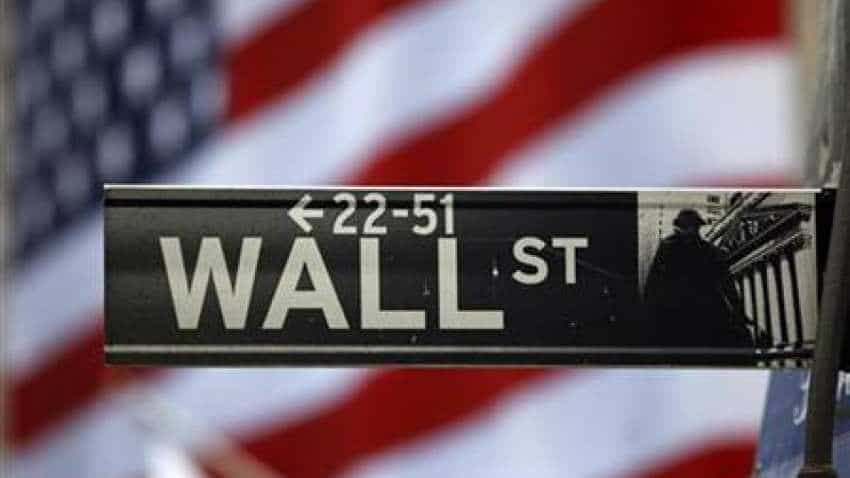Global Markets: World stock market witness loss for second successive session global economic concern
Dow Jones Industrial Average rose 0.03% to 25,510, the S&P 500 lost 0.06% to 2,799 and the Nasdaq Composite dropped 0.17% to 7,629.

World stocks sold off for a second straight session on Monday on persistent concerns over global economic growth, while benchmark 10-year US Treasury yields fell to more than one-year lows. MSCI's gauge of stocks across the globe shed 0.47 percent, after it posted on Friday its biggest one-day drop in about three months. Wall Street's main indexes were little changed during a choppy session. Investors were still digesting weak US factory data last week that prompted an inversion of the US Treasury yield curve, which is widely seen as an indicator of an economic recession.
“Investors are just a little worried about the rest of the year as far as growth," said Chris Gaffney, president of world markets at TIAA Bank. "There have been lots of signs that central banks in particular think that the global economy is slowing down.”
See Zee Business video below:
#GlobalMarketUpdate | संदीप ग्रोवर से जानिए ग्लोबल बाजारों का हाल ।@AnilSinghviZEE @sandeepgrover09 pic.twitter.com/ivdW3iqp2V
— Zee Business (@ZeeBusiness) March 26, 2019
On Wall Street, the Dow Jones Industrial Average rose 7.75 points, or 0.03 percent, to 25,510.07, the S&P 500 lost 1.64 points, or 0.06 percent, to 2,799.07 and the Nasdaq Composite dropped 12.96 points, or 0.17 percent, to 7,629.71.
The pan-European STOXX 600 index lost 0.45 percent.
In one economic bright spot, a survey showed German business morale improved unexpectedly in March after six consecutive drops, with the results supporting European shares and German bond yields.
Benchmark U.S. 10-year notes last rose 14/32 in price to yield 2.4071 percent, from 2.455 percent late on Friday. The yield fell to its lowest since December 2017.
On Friday, the spread between yields on three-month Treasury bills and 10-year notes fell below zero for the first time since 2007. Such an inversion is a warning sign about the economy. On Monday, that yield curve was still slightly inverted.
Investors were evaluating last week’s dovish pivot by the U.S. Federal Reserve, in which the central bank stunned investors by abandoning projections for any interest rate hikes this year.
“We’re examining yield curve relationships in an environment where the Fed still has enormous control over the long end of the curve, given how much they own on their balance sheet, and we’re dealing with a very accommodative global policy regime as well,” said Tom Simons, a money market economist at Jefferies in New York.
The dollar index, which measures the greenback against a basket of currencies, fell 0.12 percent, with the euro up 0.03 percent to $1.1315.
U.S. crude fell 0.03 percent to $59.02 per barrel and Brent was last at $67.28, up 0.37 percent on the day.
Gold prices rose to a more than a three-week high, helped by a weaker dollar and as worries over global economic growth pushed investors into safe-haven assets.
Spot gold added 0.7 percent to $1,322.22 an ounce.
08:01 AM IST






 Global Markets: Asian shares track Wall Street surge as US stimulus hopes grow
Global Markets: Asian shares track Wall Street surge as US stimulus hopes grow Global Markets: Dow Jones, Nasdaq skid despite Fed's action to support markets
Global Markets: Dow Jones, Nasdaq skid despite Fed's action to support markets Global Markets: Wall Street rebounds on US stimulus hopes; Dow Jones rises 1,048 points, Nasdaq scales 430 points
Global Markets: Wall Street rebounds on US stimulus hopes; Dow Jones rises 1,048 points, Nasdaq scales 430 points Global Markets: Wall Street plunges on Coronavirus' continuous fallout; Dow Jones Fell 2.997 points, Nasdaq slide 970 points
Global Markets: Wall Street plunges on Coronavirus' continuous fallout; Dow Jones Fell 2.997 points, Nasdaq slide 970 points Global Markets: Dow Jones tanks over 1400 points as Coronavirus fears deepen
Global Markets: Dow Jones tanks over 1400 points as Coronavirus fears deepen